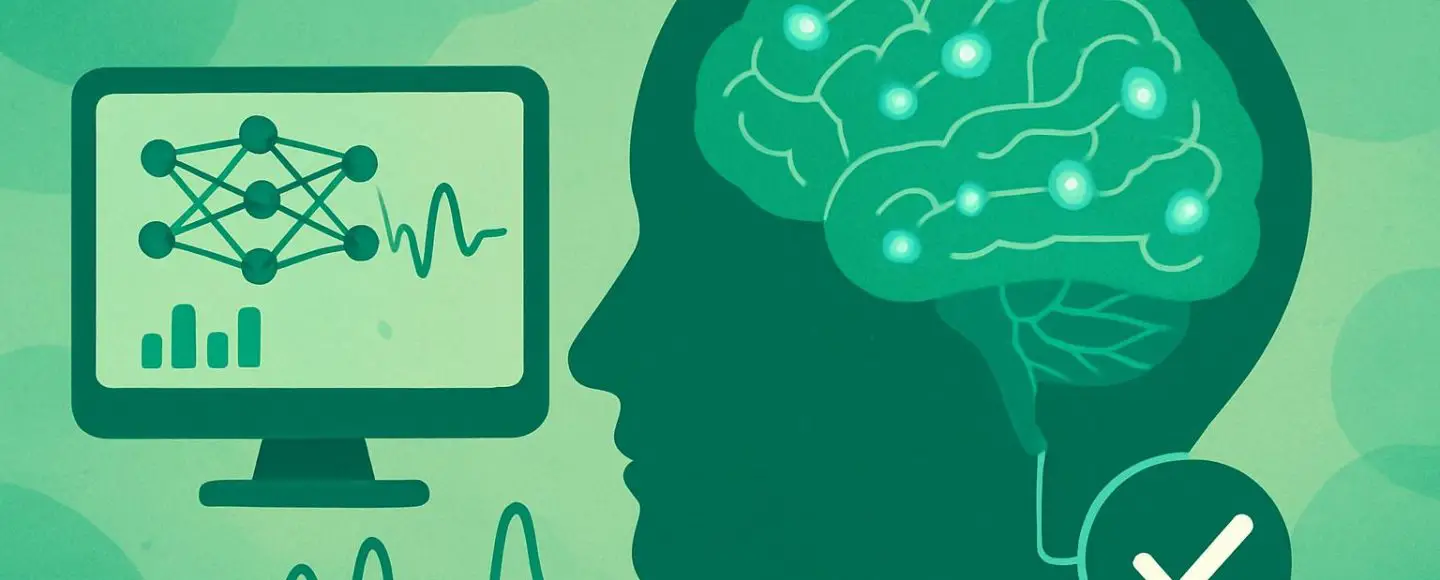
EMERALD AI Predicts Brain Health
EMERALD AI Predicts Brain Health is more than just a headline. It signals a transformative step in neuroscience. EMERALD, a cutting-edge artificial intelligence model, is capable of predicting long-term brain health from a single MRI scan. By analyzing key brain tissue patterns and comparing them with age-based norms, this tool offers a scalable, research-backed framework for early detection of neurological risk. As the need rises for proactive cognitive health screening in aging populations, EMERALD positions itself as a powerful diagnostic aid while respecting the importance of professional medical judgment.
Key Takeaways
- EMERALD AI uses a single MRI scan to analyze brain tissue volume and predict future brain health trajectories.
- It benchmarks individual brain scans against large datasets of normative aging data to detect deviations that may indicate cognitive risk.
- The model has been validated across multiple datasets, including Alzheimer’s, cerebrovascular disease, and diverse population cohorts.
- While promising, EMERALD is currently a research tool and does not substitute for clinical diagnosis or physician oversight.
What Is EMERALD?
EMERALD (Estimating Morphometric Evaluation for Risk Assessment using Learning and Diagnostics) is a novel AI-based model that predicts brain health by evaluating MRI scans. It identifies subtle variations in brain structure by measuring volumetric features such as gray and white matter, cerebrospinal fluid, and regional brain atrophy. These metrics are then compared against a reference population to determine whether an individual’s brain is aging typically or showing early signs of structural deviation.
Created by interdisciplinary teams specializing in neuroimaging and artificial intelligence, EMERALD aims to estimate the risk of future cognitive decline. It does not diagnose specific conditions. Instead, it helps flag cases that may benefit from further evaluation or preventive care strategies. This makes it a strong asset for clinical research and large-scale screening initiatives.
How EMERALD Works: Technology and Data Modeling
At its foundation, EMERALD utilizes machine learning techniques trained on thousands of MRI scans collected from individuals across a broad spectrum of ages and health conditions. The model quantifies structural biomarkers and uses a regression-based approach to estimate whether a brain appears older, younger, or consistent with its chronological age.
Main components of the EMERALD system include:
- Volumetric Feature Extraction: Automated measurements of critical regions such as gray matter, white matter, and hippocampal volume.
- Normative Modeling: Comparison against extensive datasets of healthy individuals, adjusted by age, sex, and medical history.
- Deviation Scoring: Assignment of a “brain health score” that reflects how closely the brain’s structure aligns with expected patterns.
Unlike some other tools that provide predictions without explanations, the strength of EMERALD lies in its interpretability. The model ties its predictions to specific brain areas. This allows researchers and medical professionals to interpret the data with better clarity and confidence, which is essential for evidence-based care planning.
Validation and Dataset Scope
EMERALD has been put to the test using several prominent datasets that represent a wide range of neurological and demographic diversity:
- ADNI (Alzheimer’s Disease Neuroimaging Initiative): EMERALD demonstrated a strong ability to differentiate between healthy aging, mild cognitive impairment, and Alzheimer’s symptoms.
- UK Biobank: The model was successfully scaled to assess tens of thousands of MRIs gathered from nonclinical environments.
- Stroke Rehabilitation Trials: In patients recovering from both ischemic and hemorrhagic strokes, EMERALD detected structural damage patterns associated with diverse clinical outcomes.
Across these validations, EMERALD correlated significantly with memory complaints, cognitive test scores, and diagnostic categories. These outcomes confirm its relevance not only for exploratory research but also for early clinical detection efforts. Related tools in this area, such as those used in predictive diagnostics for early disease detection, support a growing emphasis on prevention over reactive care.
Comparison: How EMERALD Stacks Up Against Other AI Models
Many other AI tools seek to forecast brain health. Each model has specific strengths, depending on its algorithm and use case:
- BrainAGE: Estimates the age gap between predicted and actual brain age. It delivers useful data but lacks clarity on regional structural change.
- DeepBrain: Employs deep convolutional networks with high predictive accuracy. Interpretability may be limited due to its black-box design.
- NeuroQuant: Regulated for clinical use and focuses on precise volume quantification. It does not concentrate on predicting aging patterns over time.
EMERALD offers a balanced combination of explainable results and predictive modeling. Its ability to function under research and potential clinical applications provides flexibility. The tool emphasizes collaborative use alongside professional analysis. This reaches beyond diagnostic tools and aligns with broader goals in AI in healthcare supporting medical research.
Clinical Implications and Real-world Use Cases
Although EMERALD is not approved for direct clinical diagnosis, several use cases highlight its utility:
- Early Screening Programs: Primary care professionals may use EMERALD to identify patients whose brain scans suggest deviation from typical aging, guiding further evaluation.
- Monitoring Cognitive Change: Research studies and trials can track EMERALD scores over time to observe progression, stagnation, or improvement.
- Systematic Resource Deployment: Predictive scoring could support health systems in distributing neurological care more efficiently, especially in aging populations.
In practice, an EMERALD score showing accelerated brain aging might justify additional cognitive testing or closer clinical follow-up. This process enhances early intervention strategies while respecting physician oversight and clinical judgment.
Dr. Lena Ho, a neuroscientist at the Cognitive Neuroimaging Lab, stated, “Tools like EMERALD bring quantitative clarity to aging studies. Predictive AI that is transparent about how and where the brain deviates helps us interpret the early biological signs of disease.”
Dr. Raj Kamal, a practicing neurologist and evaluator of AI in neurological diagnosis, offered a similar perspective. “These tools do not replace neurologists, but they do help prioritize complex cases and enhance diagnostic efficiency. Intelligent collaboration will define the future of brain health monitoring.”
Researchers working in areas such as AI in mental health tools and support platforms have also emphasized the importance of transparency in diagnostic assistive technologies. EMERALD aligns with that goal by offering clear, interpretable outputs.
Limitations and Ethical Considerations
Despite its strengths, EMERALD comes with notable caveats:
- Not Designed for Diagnosis: The tool should be used as a guide within broader health evaluation strategies.
- Data Inclusion Gaps: Models trained on limited demographic samples may not fully represent global populations.
- Variability in Imaging Standards: MRI scans vary in quality and technique depending on the clinic. This can affect structural interpretations.
From an ethical standpoint, EMERALD must remain transparent, interpretable, and subject to responsible development. It should not produce results that can be misinterpreted as definitive diagnoses. Clear guidance documents and support tools are essential for appropriate use in healthcare environments. Use of similar technologies, such as machine learning biomarkers for Alzheimer’s prediction, also reinforces the need for data diversification and ethical safeguards.
FAQs: Understanding EMERALD for Patients and Practitioners
Is EMERALD accurate in predicting cognitive decline?
EMERALD has shown strong statistical correlation with cognitive risk in well-studied databases. It is intended to predict risk, not confirm diagnosis.
How does EMERALD AI analyze an MRI scan?
The model segments the brain image, calculates critical volume measurements, and evaluates these against benchmarks derived from large reference datasets.
What kind of cognitive conditions can EMERALD help assess?
EMERALD is designed to assess risk for conditions like Alzheimer’s disease and mild cognitive impairment. It evaluates structural changes in brain regions commonly linked to early decline.
Can EMERALD replace a neurologist or radiologist?
No. EMERALD is a clinical decision support tool. It provides additional insight but should always be interpreted alongside clinical evaluation and expert judgment.
Is the tool FDA approved?
EMERALD may be used under specific regulatory pathways, such as research use or clinical decision support. Always check if the current version is cleared for diagnostic use in your region or institution.
How quickly does EMERALD deliver results?
Once the MRI is uploaded, results are typically available within minutes. Speed depends on image quality, network performance, and system integration.
Is special MRI hardware required?
No. EMERALD is compatible with standard clinical brain MRI scans, though image quality and resolution must meet minimum thresholds for accurate segmentation.
Does EMERALD store patient data?
Data handling depends on the provider’s implementation. Many versions offer anonymized processing or local deployment options to protect patient privacy. Always review data security policies before use.
How is EMERALD different from other AI tools in neuroimaging?
EMERALD focuses specifically on cognitive risk profiling, using quantitative brain structure analysis and reference-based comparisons. Other tools may focus on tumor detection, stroke, or different biomarkers.
Can patients access their EMERALD results?
Access is determined by the healthcare provider. Some clinics share results with patients directly, while others deliver them through physician consultation to provide context.
Is EMERALD useful for tracking changes over time?
Yes. EMERALD can support longitudinal tracking by comparing volume metrics across multiple scans, helping detect subtle progression in brain structure.
What does a high-risk result mean?
A high-risk classification indicates elevated statistical likelihood of future cognitive decline based on observed brain patterns. It is not a definitive diagnosis and should lead to further clinical evaluation.
Conclusion
EMERALD represents a promising advancement in AI-assisted neuroimaging, offering clinicians and patients a valuable tool for early risk detection in cognitive decline. While not a diagnostic substitute, it supports informed decision-making by highlighting subtle brain changes that may go unnoticed in routine reviews. As AI models like EMERALD continue to evolve, they have the potential to enhance preventive care, personalize treatment planning, and improve outcomes for individuals facing cognitive health challenges.
References
Brynjolfsson, Erik, and Andrew McAfee. The Second Machine Age: Work, Progress, and Prosperity in a Time of Brilliant Technologies. W. W. Norton & Company, 2016.
Marcus, Gary, and Ernest Davis. Rebooting AI: Building Artificial Intelligence We Can Trust. Vintage, 2019.
Russell, Stuart. Human Compatible: Artificial Intelligence and the Problem of Control. Viking, 2019.
Webb, Amy. The Big Nine: How the Tech Titans and Their Thinking Machines Could Warp Humanity. PublicAffairs, 2019.
Crevier, Daniel. AI: The Tumultuous History of the Search for Artificial Intelligence. Basic Books, 1993.


